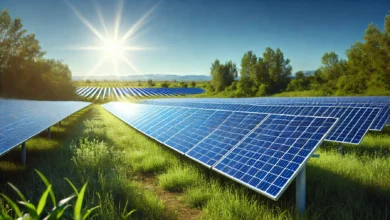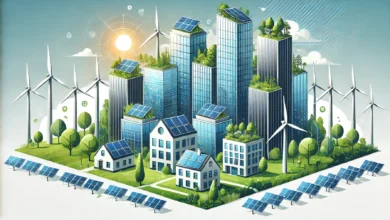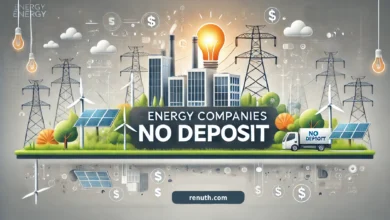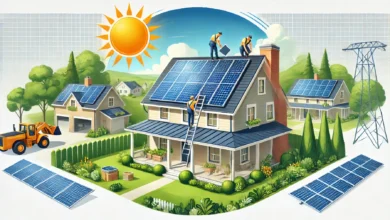What Are Recyclable Energy Sources and How Do They Work?
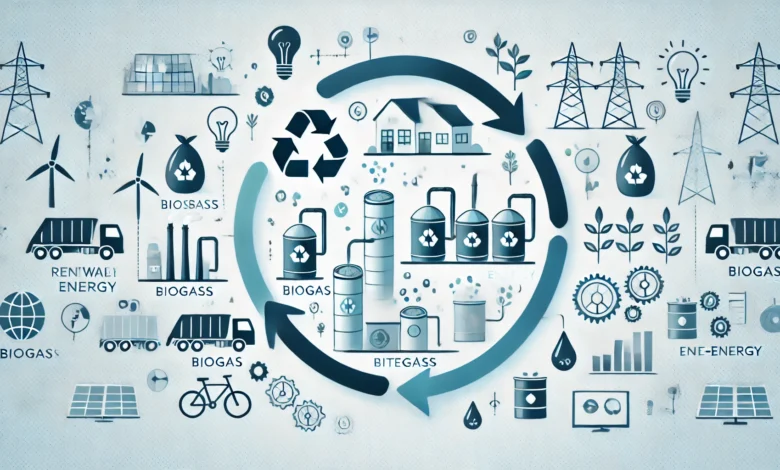
Knowing how we can harness natural energy sources and make use of them without exhausting them will be important in creating a sustainable future. Therefore, understanding what are recyclable energy sources and how they work may be helpful for anyone interested in reducing their carbon footprint and contributing to clean energy systems.
Contents
Understanding Recyclable Energy Sources
Recyclable energy sources are sources of natural energy that can replenish quickly and be utilized with little to no negative impact to the environment. Unlike fossil fuels which take millions of years to produce, recyclable energy never runs out because there are continuous natural processes occurring to make more energy — like the sun shining, environmental conditions responsible for wind patterns, and plants that utilize solar energy and carbon dioxide to grow.
Although recyclable energy is generally grouped with renewable energy sources, it can be differentiated in that recyclable energy also focuses on intended use and re-use of materials (such as biomass) and minimizes the amount of waste produced. Recyclable energy is, succinctly speaking, energy that keeps giving back time after time again.
How Recyclable Energy Systems Might Exist In Reality
The basic premise is simply natural cycles. The sun heats the earth, wind is produced, and lots of water movement occurs. All of this feeds into solar energy plants that also absorb solar energy, carbon dioxide, and provide biomass, while naturally giving back for further use. The core of Earth’s heat source is stable and can be utilized through geothermal technology. Each system is able to access these continuous ongoing cycles of energy, while not using up the energy source itself.
Main Types of Recyclable Energy Sources
Solar Energy
Solar panels utilize sunlight and convert sunlight directly into electricity. Over time, even the production of solar panels is becoming more recyclable and subsequently reduces waste over time. All human beings on Earth receive some measure of solar energy. Whether it be for a small device such as a calculator, satellite systems used in space, or anything in between (including inflexible solar that can cover miles of rooftop and utility scale). Interested in solar energy?
Wind Energy
Wind turbines capture the kinetic energy of moving air itself and convert it into electricity. Wind pushes the blades, the blades turn the rotor, then the rotor generates electricity by the mechanical work done by the wind. Today’s turbines are getting more and more of their components, including the blades, from recyclable material figuring its way into a circular economy.
Hydropower
Hydropower systems capture the energy in moving water to produce electricity. Although hydro dams have changed ecosystems, small-scale hydro has much less effect than large hydroelectric projects. Water, by definition, is basically a resource that can be recycled through Earth’s hydrologic cycle. Hydropower Pros and Cons outlines some benefits and disadvantages of hydropower.
Biomass Energy
Biomass energy uses organic material in the form of plant waste, animal byproducts, and residue to obtain energy. Since new plants can be grown to recreate harvested plants, biomass can be considered a recyclable energy source in theory, especially if you consider sustainably managed operations. Biomass can be road-side waste from the field or farm, or wood pellets, and makes use of the cycles of life.
Geothermal Energy
A few geothermal plants have utilized Earth’s internal heat for electricity or heat generation, and the heat is practically infinite. Geothermal systems, like for wind energy systems, have a lot of practical efficiency, and don’t have a lot of effect outdoors compared to other energy sources. For a more in-depth discussion, check out our article on Geothermal Energy Pros and Cons.
Pros and Cons of Renewable Energy Sources
| Feature | Pros | Cons |
|---|---|---|
| Solar Energy | Zero emissions during the use of the energy | Payback time for installation is uncertain |
| Wind Energy | Very scalable, low carbon | Intermittent energy, weather dependent |
| Hydropower | Secure, reliable, and long-lasting systems | Environmental disruption due to the creation of large dams |
| Biomass | Waste is reduced and uses local resources | Needs to be managed carefully to remain sustainable |
| Geothermal | Can provide a constant energy supply | Geographically limited, not available to every region |
Why Recyclable Energy Sources are More Relevant Than Ever
It’s easy to think energy is about keeping the lights on, but recyclable energy is so much more important than what we pay our electricity bills for; recyclable energy reduces climate instability, protects ecosystems, and saves money in the long run. The reality is that the choices we make today are going to impact the world future generations will inherit.
Good recyclable energy knowledge is becoming increasingly a mainstream subject in clean energy conversations all over the world. Countries investing in recycling energy methods early will be able to build their own energy sovereignty and stronger economies over time.
Frequently Asked Questions (FAQ)
Is recyclable energy zero waste?
No system is 100% zero waste, however recyclable energy systems produce far less waste than fossil fuels.
What is the easiest to implement recyclable energy source for home?
Solar Energy. Rooftop solar panels are available everywhere and are scalable to your home energy needs.
Can wind turbines be recycled?
Modern turbines use an increasing amount of recyclable materials, and recycling programs of end-of-life wind turbines are growing quickly.
Is biomass always a good option?
Biomass does require management to be sustainable, without managing biomass it could lead to deforestation, or competition with food crops.
What country leads recyclable energy use?
For example, Iceland derives almost all its energy needs from geothermal and hydropower energy.
By supporting recyclable energy, we are not just supporting the ongoing evolution of technology, but also the development of better health and stability on our planet that can last decades. Every step we take, whether that be installing a solar panel at our house, or supporting windfarms, or just committing to a green energy supplier, is another instance of making a cleaner, more intelligent future.
